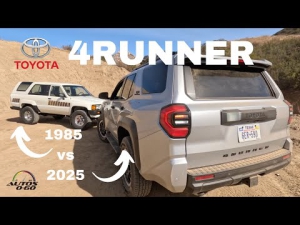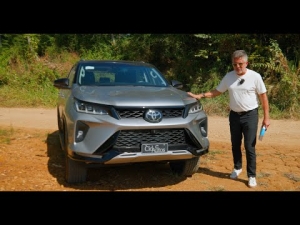Toyota 4Runner vs. Fortuner: Would America’s 4X4 Fans Prefer the Foreign SUV?
Toyota makes some of the best cars on the market in every segment, including cars for off-roading. With that being said, like many other automakers, Toyota sells some cars that are exclusive to automotive markets outside of the U.S. Here’s a look at the Toyota Fortuner and how it’s an off-roading SUV comparable to the Toyota 4Runner.
A look at the Toyota Fortuner’s capabilities
According to CarAdvice, the Fortuner is a capable but relatively expensive SUV. It comes with a 2.8-liter, four-cylinder turbo-diesel engine. This engine option is rated at only 201 hp, but it also produces roughly 369 lb-ft of torque. However, while it is a powerful 4×4 SUV, it’s not going to be a cheap one. CarAdvice reports that the Fortuner starts at about $49,000 AUD, which is equal to about $36,000 USD.
That price tag will pay for a powerful engine and some great off-roading capability. CarAdvice reports that the Fortuner is “one of the best in the segment” for off-roading. This is because the Fortuner has Toyota’s off-road traction control system and a standard locking rear differential.
Furthermore, the Fortuner has a few nice creature comforts in the cabin in addition to third-row seating. That third-row isn’t very big, but it’ll be good enough for kids and smaller adults. Also, like other Toyotas, the Fortuner gets good safety ratings, such as a five-star ANCAP rating.
How does the Toyota 4Runner compare?
Off the bat, the similarly-named 4Runner is a more expensive vehicle than the Fortuner. According to Car and Driver, the 2021 4Runner starts at about $37,500, which is a roughly $1,500 premium over the Fortuner. However, rather than getting a turbo-diesel, the 4Runner has a 4.0-liter V6 gas engine. That V6 is rated at 270 hp and 278 lb-ft of torque, with more horsepower but less torque than the Fortuner offers.
When it comes to off-roading, both models are very comparable SUVs. As Car and Driver wrote, the 4Runner has a locking rear differential and traction control as standard features. In tests, the 4Runner, especially in its TRD trim, excels off-road, just like the Fortuner. So, while there may ultimately be some small differences in terms of their off-roading capabilities, both Toyota SUVs are very similar in this regard.
An area that they differ on, though, is on the inside. Both the 4Runner and the Fortuner are in the mid-size SUV segment. However, the Fortuner has third-row seating, but the 4Runner doesn’t. As a result, Fortuner owners can take more folks on an off-roading adventure than 4Runner owners can. Plus, due to the Fortuner’s impressive torque advantage, it can tow much more than the 4Runner can.
The Toyota Fortuner will probably not come to the U.S.
The Fortuner’s turbo-diesel will allow it to tow about 6,800 pounds compared to the 4Runner’s 5,000-pound towing capacity. However, that turbo-diesel engine is also why the Fortuner will probably never come to the U.S. As powerful as it is, that turbo-diesel engine wouldn’t meet the emissions standards that are set in the U.S.
On top of that, Toyota already has the 4Runner in the segment. This would mean that, even if the Fortuner could be sold in the U.S., it would eat into the 4Runner sales. Due to those two factors, even though the Fortuner is a competent off-roading SUV that Americans may love, it’s just not going to come here.
RELATED: The 2021 Toyota 4Runner Is Totally Up for Your Beach Adventures
The post Toyota 4Runner vs. Fortuner: Would America’s 4X4 Fans Prefer the Foreign SUV? appeared first on MotorBiscuit.







